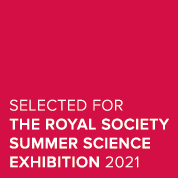Royal Society Summer Science 2021 explores how scientific research is transforming our understanding of the processes behind AD and promises to increase its waste recycling potential. We hope to inspire visitors with a new type of microbiology that goes beyond the microscope and the petri dish and enables us to investigate whole communities of thousands of microbial species, most of which remain unidentified and unseen. See just how much is possible with the awesome power of modern genetic sequencing, bioinformatics and how this science is being applied to solve a real world societal problem, such as waste management.
Explore our interactive content
Animation about the microbes that manage our waste
Anaerobic digestion lightning talk
AD game – Click full-screen for the best experience
How microbial communities can aid us in turning wastewater into low carbon energy
What is anaerobic digestion?
Anaerobic digestion or AD is a long-established and important technology that helps us manage our waste. AD uses microbes in large tanks to break down waste organic materials such sewage sludge, food, and farming waste without oxygen being present.

Anaerobic digesters at the Yorkshire Water Knostrop sludge treatment facility. © Yorkshire Water
Why is it important?
AD is vital for treating our sewage and other waste streams. It is used by most water treatment facilities in the UK and also for recovering resources from food waste and farm slurries. This technology makes a vital contribution to the sustainability of our society: treating our waste and so reducing the amount of material sent to landfill; producing renewable energy (biogas) and so decreasing our dependence on fossil fuels; and producing carbon-friendly crop fertiliser that helps to maintain soil health.
What is AD microbial community and how biogas is produced?
Inside the AD tank there are millions of different microbes all working together to produce biogas (mixture of biomethane and CO₂).
AD is a multi-stage process that includes series of metabolic conversations. Firstly, the microbes break down large polymers such as proteins, carbohydrates, and fat into simple monomers: sugars, amino acids and fatty acids during hydrolysis step. Secondly, the bacteria in the AD tanks convert those monomers into volatile fatty acids. This step is known as acidogenesis. A different set of microbes then converts those acids into acetic acid, releasing hydrogen and CO₂. Finally, microbes called methanogens work on the acetic acid to produce biomethane. Biomethane can also be produced by reduction of carbon dioxide with hydrogen. This process occurs naturally in lakes and ocean sediments, in cows’ stomachs and even in our own gut!
How is research transforming our understanding of AD?
Although AD has been optimised from an engineering perspective, the microbial processes on which AD depends are complex and poorly understood, leading to low productivity rates and sometimes complete AD facility failure. One reason for our lack of understanding is that many AD microbes are difficult to grow in the laboratory. In collaboration with industry partners, the researchers use a genetic technique called DNA sequencing to learn how anaerobic microbial communities interact with each other and respond to their environment. By better understanding the AD microbes the process can become more efficient, produce higher levels of renewable energy and generate a higher-quality fertiliser product.
School resources
We have built a Biorefinery world in Minecraft! If your school or workplace has signed up to the Minecraft Education Edition, see below for links to download and install.
In the world you will learn about the biorefinery process of producing energy and food additives using organic biodegradable materials.
Download and installation instructions are available via Google Drive or Dropbox.

Meet the Team

Department of Biology
University of York
Find out more about the pioneering research project being done by the University of York and Yorkshire Water, to improve the efficiency of a process to convert sewage sludge into green energy.
@insanity_one @UniOfYork @BiologyAtYork

National Horizons Centre
Teesside University
Principal Lecturer in Biological Sciences and Biotechnology at Teesside University
@CarolineOrrTees @TeessideUni @TU_NHC
You can explore more cutting-edge science with the Royal Society here.
















